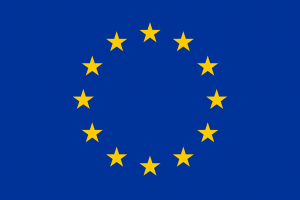Global Gateway: Namibia becomes a global pioneer for Africa’s green transition

On Friday, 11 April 2025, the first zero-emissions iron production facility in Africa, the HyIron plant, was inaugurated at the Hyron Oshivela Production site in the presence of the Namibia’s new President of the Republic Netumbo Nandi-Ndaitwah, the EU Ambassador, the Ambassador of Germany and the Namibian Minister of Industries, Mines and Energy. It marks Southern Africa’s very first production of green hydrogen and the first ever production of directed reduced iron (DRI).
HyIron is a consortium comprising German and Namibian renewable energy and engineering companies. The plant is powered by advanced clean energy technology using the largest electrolyser in Southern Africa. This took place in the framework of the EU-Namibia strategic partnership on Green Hydrogen under Global Gateway.
Commissioner for International Partnerhips Jozef Síkela commented: “Producing green hydrogen in Africa has huge potential, so it’s great to see a real, practical project that will turn it into a million tonnes of zero-emission iron every year. But it’s not just about cutting emissions—it will also create thousands of new jobs locally. That’s exactly what the Global Gateway stands for: sustainability, real opportunities, and progress that benefits everyone involved.”
At full scale, HyIron will produce one million tonnes of green iron annually, cut 1.8 million tonnes of CO₂ emissions, and create over 6,000 construction jobs and 900 permanent roles. It illustrates how Namibia’s capacity to generate clean and affordable energy is attracting investments, enabling local value creation and positioning the country at the forefront of the Africa green transition.
The project demonstrates also the significant job-creation potential that this new industry holds for Namibia. During the initial pilot phase alone, over 60 Namibian small and medium-sized enterprises were employed, creating over 400 jobs.
The European Union with its Global Gateway investment strategy is playing a major role in this achievement, together with Germany and soon the Netherlands. The pilot phase was supported by an initial financial contribution from Germany’s Federal Ministry for Economic Affairs and Climate Action (BMWK) of €13,7 million. This will be further supported with a blended-finance contribution of €12 million from the EU and the Netherlands for the second phase. This phase foresees to scale production to 200 000 tonnes per year of direct reduced iron. An off-take agreement has already been signed with a leading German steel manufacturer.
The HyIron plant delivers on the global campaign “scaling up renewables in Africa” launched by Commission President von der Leyen to mobilise public and private investments for renewable energy projects in Africa. Around 50 energy related projects in Africa will be signed throughout the duration of the programme.
Background information
Global Gateway is the EU's positive offer to reduce the worldwide investment disparity and boost smart, clean and secure connections in digital, energy and transport sectors, and to strengthen health, education and research systems. The Global Gateway strategy embodies a Team Europe approach that brings together the European Union, EU Member States, and European development finance institutions. Together, we aim to mobilise up to €300 billion in public and private investments from 2021 to 2027, creating essential links rather than dendencies, and closing the global investment gap.
Launched in November 2024 by European Commission President Ursula von der Leyen and South African President Cyril Ramaphosa, the “Scaling up Renewables in Africa” campaign is a year-long global initiative to accelerate Africa’s clean energy transition. Coordinated with Global Citizen and supported by the International Energy Agency, the campaign aims to drive investments and commitments from governments, financial institutions, the private sector, and philanthropists. Building on the EU-Africa Global Gateway Investment Package, it focuses on expanding access to affordable, renewable energy across the continent and reducing global emissions. In March 2025, the campaign aligned with Mission 300, a World Bank and African Development Bank initiative to provide electricity to 300 million people in Africa by 2030.
Further information













